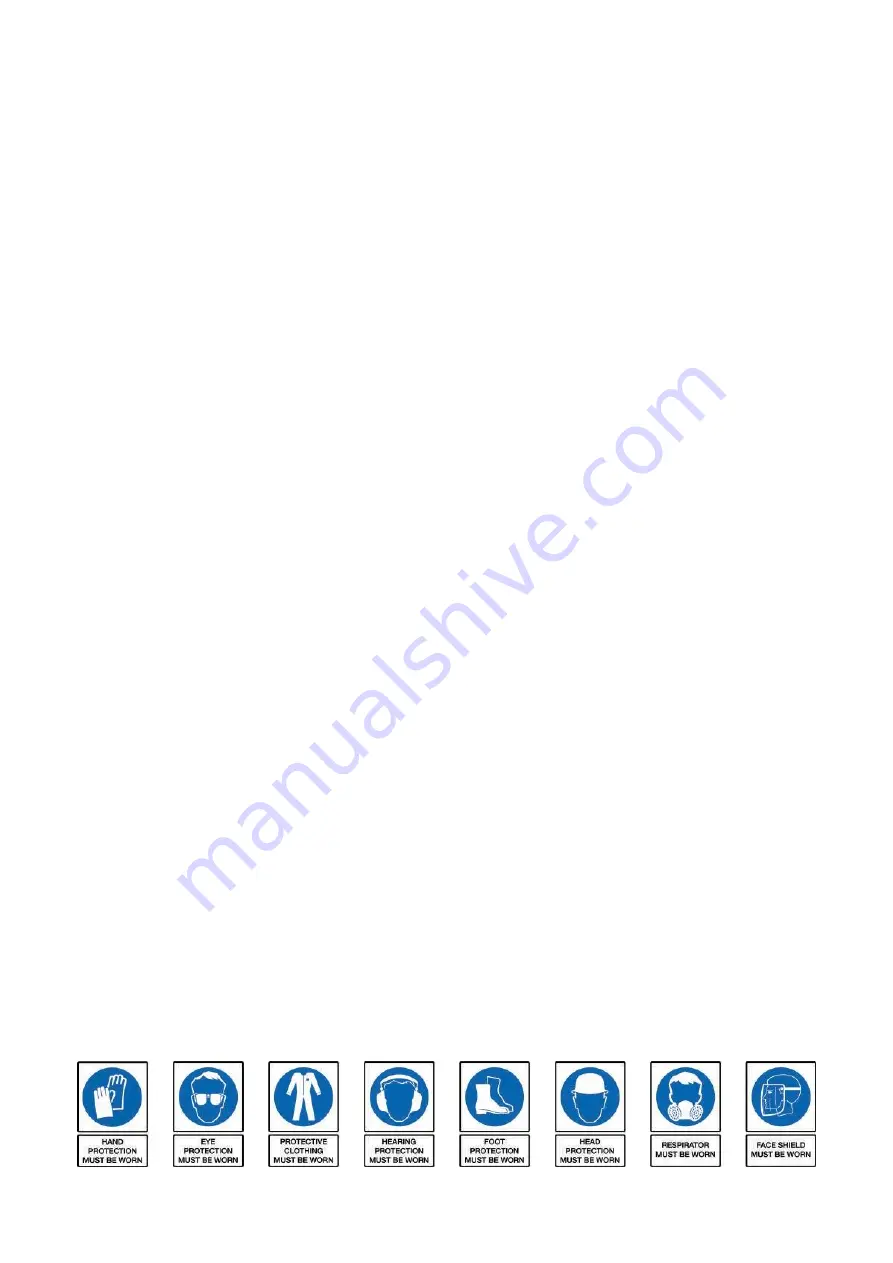
8
2.15
2.16
2.17
2.18
2.19
2.20
2.21
2.22
2.23
2.24
2.25
2.26
2.27
2.28
2.29
2.30
2.31
2.32
DO NOT operate the compressor without all safety guards in place.
DO NOT attempt to move the compressor by pulling the air hose.
DO NOT use the compressor for a task for which it was not designed.
DO NOT deface the certification plate attached to the compressor tank.
DO NOT operate the air compressor without an air filter.
DO NOT use the compressor indoors, the exhaust fumes are poisonous.
DO NOT allow anyone to operate the compressor unless they have received full
instruction.
DO NOT check the ignition system by removing the spark plug or spark plug lead.
Make sure that the engine fuel is stored in an appropriate container. For long term
storage, ensure that the fuel tank is drained and that the compressor is adequately
protected.
DO NOT smoke or have any naked flames nearby whilst refuelling.
DO NOT leave the compressor unattended.
DO NOT remove the fuel cap, or try to refuel while the engine is running or warm. Stop
the engine and allow it to cool before refuelling.
DO NOT refuel in a closed or poorly ventilated environment as there is a danger
of explosion or fire. Refuel outdoors.
DO NOT operate the compressor if there is a fuel leak. Move the unit to a safe area
where there is no risk of ignition until the leak has been rectified and the machine is dry.
DO NOT block the engine ventilation grills.
DO NOT cover the compressor or restrict airflow around the machine whilst it is
operating.
The air tank is a pressure vessel and the following safety measures apply;
DO NOT tamper with e safety valve and DO NOT modify the air tank in any way.
DO NOT strap anything to the tank.
DO NOT subject the tank to impact, vibration or heat.
DO NOT allow contact with abrasive or corrosive materials.
YOU MUST drain condensation from the tank daily and inspect inside walls for
corrosion every 12 months.
Correct Personal Protective Equipment (PPE) MUST be worn at all times when operating
or repairing this machine. This should include but is not limited to;
The pressure safety valves on Hyundai compressors have been updated to comply
with the latest CE certification standards. The pressure release pull ring has been
removed from the valve due to the pull ring being incorrectly used to drain the air
from the compressor tank, causing excessive wear to this safety valve. The air and
moisture should drained from the tank by releasing the drain valve on the bottom of
the tank.
2.3
3
Summary of Contents for HY140200PES
Page 1: ...1...






































